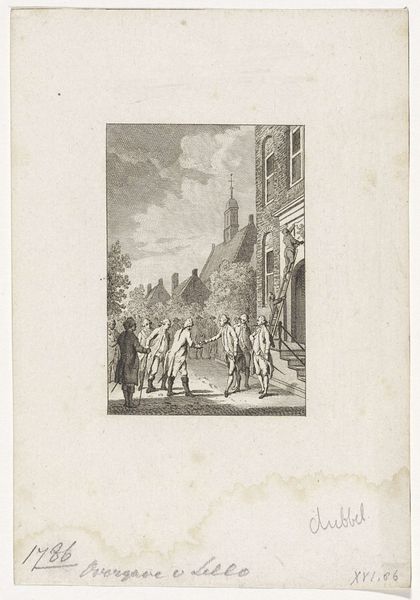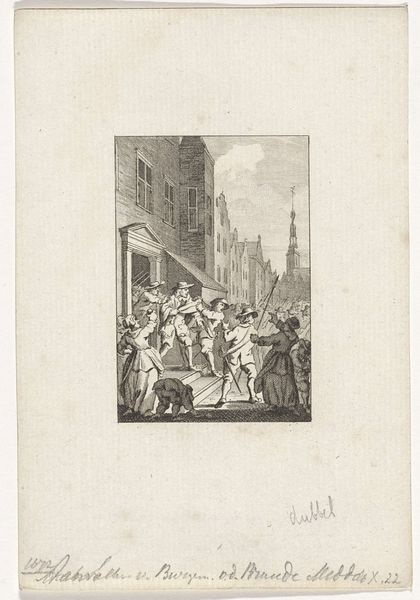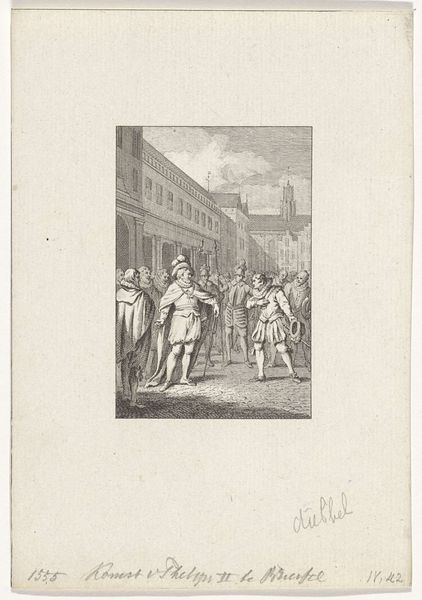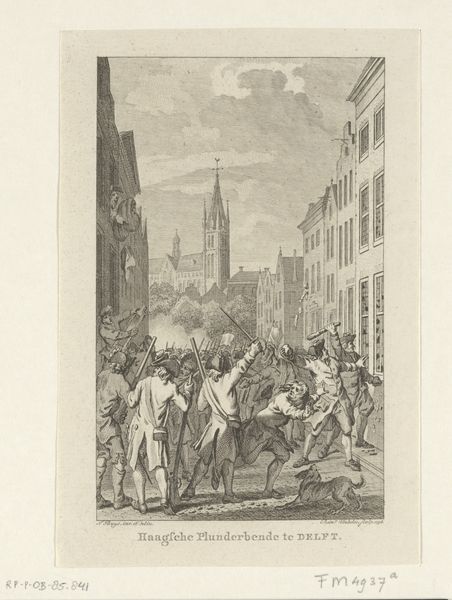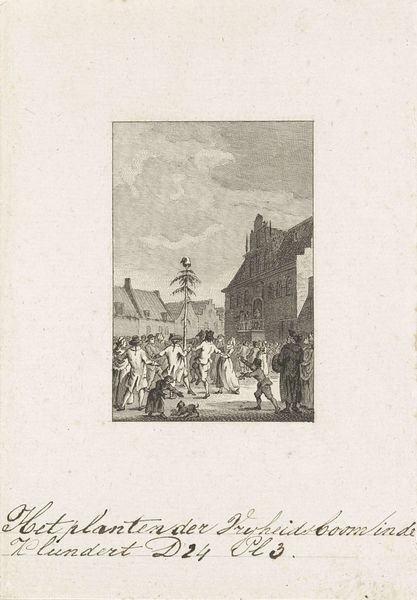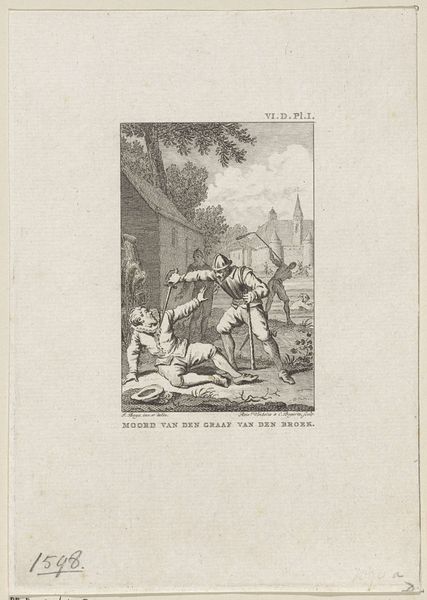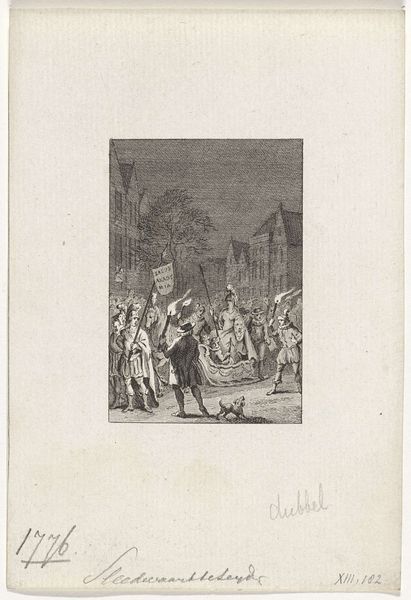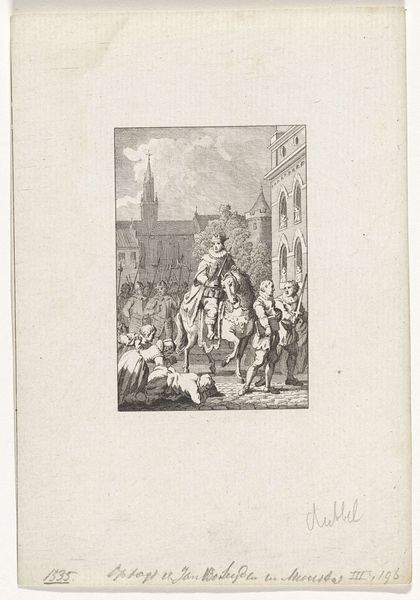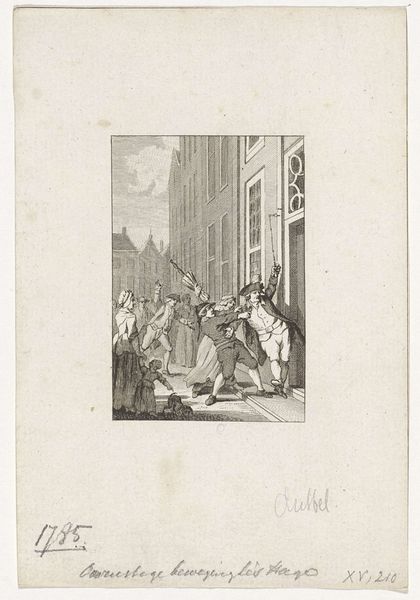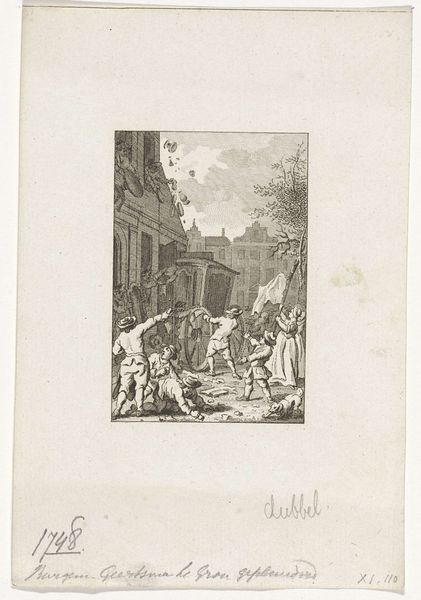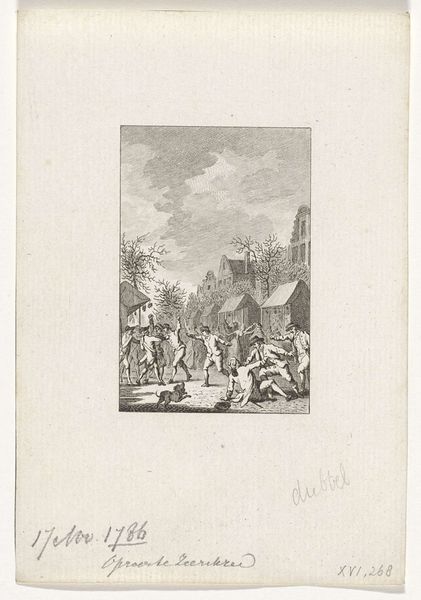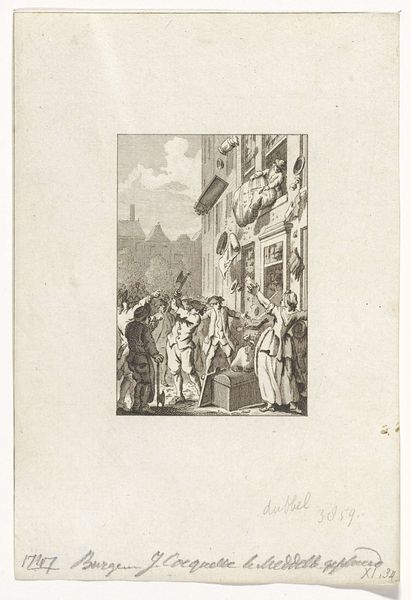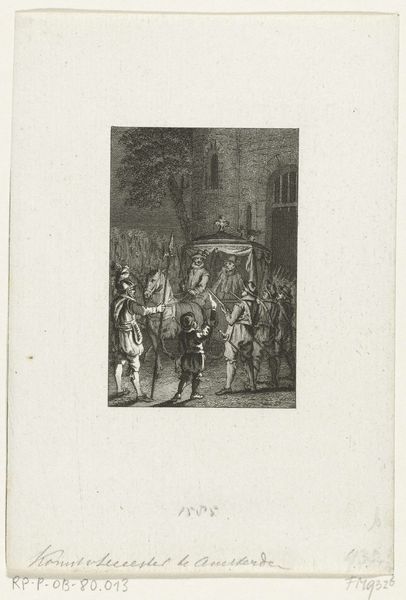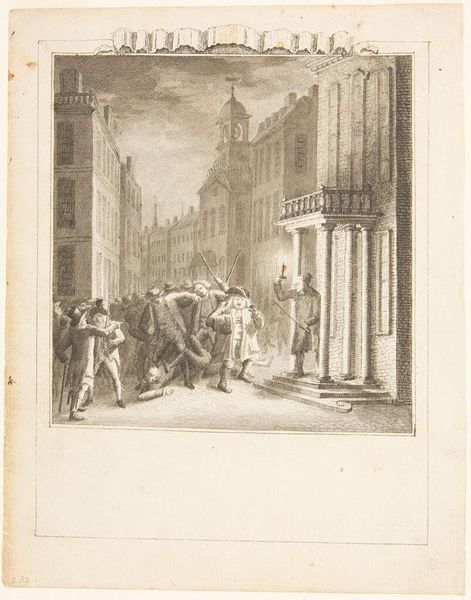
Dragonders trekken door de Witte Poort Leiden in, 1748 1783 - 1795
0:00
0:00
drawing, print, etching, engraving
#
drawing
# print
#
etching
#
cityscape
#
genre-painting
#
history-painting
#
engraving
Dimensions: height 160 mm, width 100 mm
Copyright: Rijks Museum: Open Domain
Curator: Reinier Vinkeles created this etching and engraving, titled "Dragonders trekken door de Witte Poort Leiden in, 1748," sometime between 1783 and 1795. It depicts dragoons entering Leiden through the White Gate. Editor: My immediate response is the strong sense of dynamism! The horses surging forward, the townspeople reaching out. Even though it’s static, you can almost hear the hooves and the murmur of the crowd. There’s definitely a tension between celebration and maybe…occupation? Curator: That tension is palpable, isn’t it? It's crucial to understand this through the lens of the Stadtholder's restoration. We see here the Orangist troops entering Leiden after the Patriot movement was suppressed. It shows how power shifts are enacted and visualized in public spaces. The print was made decades after the event, which points to a continued interest in political messaging. Editor: And how are the citizens positioned within that political landscape? Notice how the crowd isn’t a monolithic entity, look at the different behaviors depicted. Are they welcoming saviors, or are they complicit in the violent suppression of dissent? The presence of women in the image also poses critical questions about the gendering of nationalism and power. What roles were expected of them in these performative displays of political might? Curator: Precisely. And considering the socio-political role of prints at the time, particularly their function as disseminators of information, we see Vinkeles’ work participating in a dialogue about Dutch identity and leadership. The detail is compelling, even down to the architecture of the White Gate itself, framing this very theatrical display of power. It becomes a record but also a narrative construction. Editor: Yes! This work is an engraving which implicates reproducibility and accessibility. So, beyond a straightforward depiction, Vinkeles' choices speak to strategies for shaping collective memory around themes of victory, submission, and, I'd argue, anxieties about shifting power dynamics. How else was this historical event being rendered in popular imagination at the time? Curator: It really allows one to think about how seemingly objective historical depictions are infused with contemporary values and ideological concerns. It's never just about the past, is it? Editor: Exactly, it forces us to consider the layered interpretations of the events portrayed and their lasting resonance in art, culture, and society. Thanks!
Comments
No comments
Be the first to comment and join the conversation on the ultimate creative platform.
